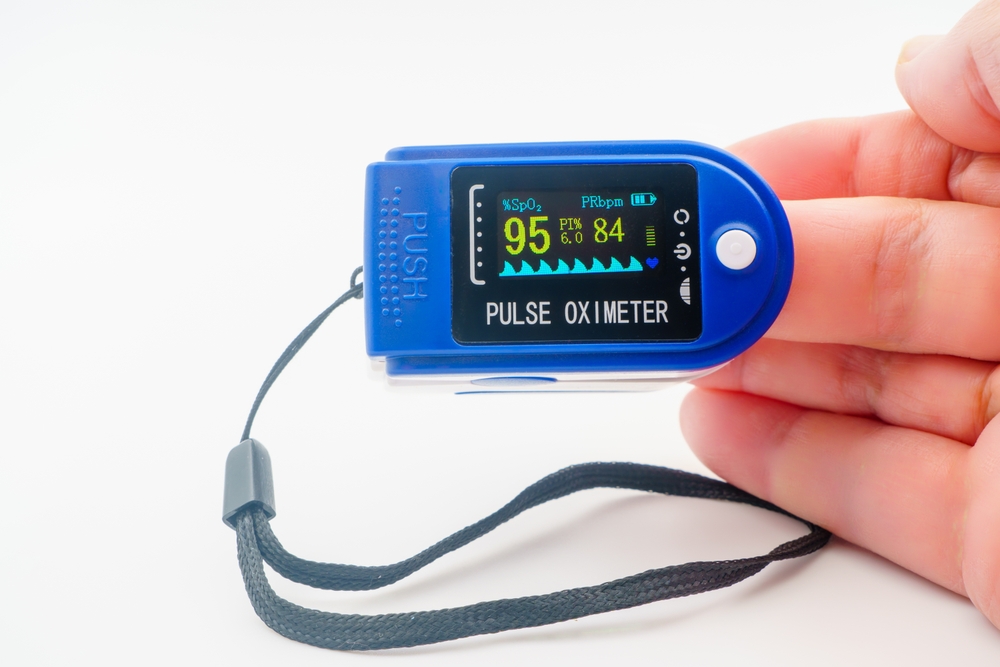Mark Kopec Now
Oxygen Saturation
The Silent Threat: Oxygen Saturation and the Shadow of Medical Malpractice
Oxygen saturation is one of the most fundamental measurements in medicine, often referred to as the “fifth vital sign.” It represents a continuous picture of a person’s life-sustaining process. When this critical measure falls, it signals a potentially fatal emergency known as hypoxemia. In the context of healthcare, a failure to properly measure, interpret, or respond to low oxygen saturation can constitute medical malpractice, then leading to catastrophic and often irreversible patient harm. Understanding the role of oxygen in the body, how its levels are measured, and the severe consequence of its deprivation is critical for both medical providers and patients seeking justice for preventable injury.
The Lifeblood of the Body: Oxygen’s Journey
What is Oxygen and What Does it Do?
Oxygen (O2) is an odorless, colorless gas that is absolutely essential for human life. Its primary function is to fuel cellular respiration. That is the metabolic process that specifically produces adenosine triphosphate (ATP)—the energy currency of the cell. Without sufficient oxygen, cells, particularly those in the brain and heart, cannot produce energy and begin to die rapidly.
How Oxygen Gets into and Through the Body
The journey of oxygen begins with respiration:
- Inhalation: Air enters the lungs, traveling down the bronchi and then into millions of tiny air sacs called alveoli.
- Gas Exchange: The alveoli are surrounded by a network of capillaries. Oxygen diffuses across the thin walls of the alveoli and capillaries into the bloodstream.
- Transport: Once in the blood, oxygen does not float freely. It binds rapidly and efficiently to a protein called hemoglobin, which is in red blood cells. Each hemoglobin molecule has four binding sites for oxygen. Oxygen-bound hemoglobin is called oxyhemoglobin.
- Delivery: The blood, now rich in oxyhemoglobin, is pumped by the heart to all body tissues. At the tissue level, oxygen is released from the hemoglobin and diffuses into the cells to perform its vital function.
Oxygen saturation (usually denoted as SpO2 for a pulse oximeter reading or SaO2 for an arterial blood gas test) is the percentage of hemoglobin binding sites in the bloodstream that are occupied by oxygen. It is a direct measure of how well the lungs are oxygenating the blood.

Measuring the Vital Sign
How to Measure Oxygen Saturation
The most common and non-invasive way to measure oxygen saturation is with a pulse oximeter. This small, clip device typically goes on the tip of a finger or earlobe.
- The Technology: The pulse oximeter shines two wavelengths of light (red and infrared) through the tissue.
- The Principle: Oxyhemoglobin and deoxyhemoglobin (hemoglobin without oxygen) absorb light differently. The device calculates the ratio of light absorption for the two wavelengths to determine the percentage of hemoglobin saturated with oxygen. The reading displays as a percentage.
- Accuracy Concerns: A significant and documented concern is that pulse oximeters can overestimate oxygen levels, particularly in patients with darker skin tones. Melanin can interfere with light absorption, leading to a falsely elevated reading. This potential inaccuracy can mask dangerously low oxygen levels, leading to delayed or inadequate treatment and serving as a complex basis for potential medical malpractice claims rooted in systemic healthcare inequity.
Good and Bad Measures
| Measure Category | Oxygen Saturation (SpO2) | Interpretation |
| Normal/Good | 95% to 100% | Indicates the patient is well oxygenated. |
| Concerning | 90% to 94% | May indicate hypoxemia, requiring monitoring and possibly supplemental oxygen. |
| Critical/Bad | Below 90% | Indicates severe hypoxemia, which is life-threatening and requires immediate medical intervention. |
The Crisis of Low Oxygen Saturation
Causes of Low Oxygen Saturation (Hypoxemia)
Hypoxemia is a life-threatening condition caused by low oxygen in the blood. The causes are varied but generally stem from problems with the lungs, blood, or circulation:
- Pulmonary Issues:
- Ventilation-Perfusion (V/Q) Mismatch: Occurs when there is a lack of airflow to the alveoli (ventilation), or a lack of blood flow to the lungs (perfusion). Examples include pneumonia, pulmonary embolism (blood clot in the lung), and Chronic Obstructive Pulmonary Disease (COPD).
- Hypoventilation: Breathing too slowly or shallow, often due to medications (like certain opioid pain relievers or anesthetics), brain disease, or severe lung disease.
- Circulatory Issues:
- Right-to-Left Shunt: Deoxygenated blood bypasses the lungs and flows directly to the left side of the heart to be pumped to the body, often due to congenital heart defects.
- Other Causes:
- Anemia: Not enough healthy red blood cells to carry oxygen.
- High Altitude: Less oxygen is available in the air to breathe.
Effects of Low Oxygen Saturation
When blood oxygen is low, the tissues in the body do not receive the necessary oxygen to function, a condition known as hypoxia. The most sensitive organ is the brain. The symptoms and effects of hypoxia can be severe and rapid:
- Early/Moderate Symptoms: Headache, confusion, anxiety, restlessness, shortness of breath, and rapid heart rate (tachycardia).
- Severe Symptoms: Bluish discoloration of the skin, lips, and nail beds (cyanosis), severe confusion, loss of consciousness, slow heart rate (bradycardia), and organ damage.
- Permanent Damage: Prolonged or severe hypoxia can lead to hypoxic brain damage (e.g., in adults) or HIE (Hypoxic Ischemic Encephalopathy) (e.g., in newborns), resulting in permanent cognitive deficits, cerebral palsy, epilepsy, or death.
How to Treat Low Oxygen Saturation
The goal of treatment is to rapidly restore the oxygen level to a safe range (typically ≥95%) and also address the underlying cause. Treatment options include:
- Supplemental Oxygen: Administering oxygen via nasal cannula, face mask, or non-rebreather mask.
- Respiratory Support: For severe cases, this may involve assisted ventilation with a BIPAP/CPAP machine or a mechanical ventilator (intubation).
- Addressing the Cause: Treating the underlying condition (e.g., antibiotics for pneumonia, blood thinners for pulmonary embolism, or surgical intervention for certain heart defects).
Low Oxygen Saturation and Medical Malpractice
Medical malpractice occurs when a medical provider treats and it falls below the accepted standard of care, and this failure directly causes patient injury. Failures related to oxygen saturation often fall into two main categories: actions that cause low oxygen and failures to respond to low oxygen.
Medical Malpractice Examples That Cause Poor Oxygen Saturation (Hypoxemia/Hypoxia):
In these cases, the negligent act directly creates the dangerous condition:
- Anesthesia Errors: Anesthesiologist administering excessive anesthesia or sedatives that depress the patient’s respiratory drive, causing them to breathe too slowly or shallowly, and also leading to hypoventilation and a drop in SpO2.
- Airway Mismanagement: Errors during intubation (placing a breathing tube), such as inserting the tube into the esophagus instead of the trachea (windpipe), or failing to recognize and correct a displaced tube.
- Negligent Monitoring of Respiratory Depression: Failing to properly monitor a patient receiving opioid pain medication on a general ward, allowing their breathing to become dangerously slow without intervention.
- Birth Injuries: Oxygen deprivation (perinatal asphyxia) during labor and delivery is a major cause of birth-related malpractice claims. Examples of negligence include:
- Failure to recognize and respond to fetal distress signs (indicated on a fetal monitor), which would then prompt an emergency C-section.
- Failure to address a compressed umbilical cord or placental abruption in a timely manner.
Medical Malpractice Claims for Failing to Respond to Low Oxygen Saturation
This is generally the most common category of malpractice involving low SpO2. The failure is a delayed or absent response to a clear warning sign:
- Failure to Monitor: The most critical step. If a patient is at risk, such as after surgery or with a known pulmonary condition, a healthcare provider’s failure to adequately monitor SpO2 (either continuously or at appropriate intervals) breaches the standard of care.
- Failure to Act on Alarms/Readings: Ignoring a critically low pulse oximetry reading or a persistent alarm. For instance, a nurse or physician on an overnight shift failing to escalate care for a patient whose SpO2 is consistently in the low 90s, leading to a crash call and permanent hypoxic injury.
- Delayed Treatment: Recognizing the low SpO2 but failing to provide rapid, appropriate treatment (e.g., delay in the administration of supplemental oxygen, waiting too long to call for an intubation team, or taking too long to transfer a patient to a higher level of care).
- Racial Bias in Diagnosis (A New Frontier): A growing body of evidence shows that pulse oximeters may overestimate oxygen levels in people with darker skin. If a healthcare provider relies solely on a falsely high pulse oximeter reading, and thus fails to provide timely care to a patient who is actually severely hypoxemic, this may form the basis for a medical negligence claim, particularly if it can be proven that a competent provider should have suspected a device inaccuracy and ordered a confirmatory blood test.
Next Step: Call The Kopec Law Firm about Oxygen Saturation & Medical Malpractice
In all these scenarios, when a medical provider departs from the accepted standard of care and it results in prolonged hypoxemia and subsequent catastrophic injury, such as permanent brain damage or death, the grounds for a medical malpractice claim are established. The key is specifically showing that a timely and appropriate intervention would have prevented the negative outcome.
If you have a potential medical malpractice case, then visit the Kopec Law Firm free consultation page or video. Then contact us at 800-604-0704 to speak directly with Attorney Mark Kopec. He is a top-rated Baltimore medical malpractice lawyer. The Kopec Law Firm is in Baltimore and pursues cases throughout Maryland and Washington, D.C.





